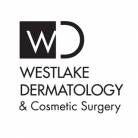Chest Acne: Causes, Prevention, and Treatment Options

A common skin condition, chest acne will manifest in a majority of people at some point in their lifetime. It can range in severity, from minimal blackheads and whiteheads to painful cystic nodules, often also associated with acne on the shoulders, back, and face. As dermatologists see this condition on a regular basis, it is important to understand what causes chest acne and how to treat and prevent this condition.
What is Chest Acne?
Chest acne is acne appearing on the upper chest, where it tends to occur in areas of skin folds. These areas include that between or underneath the breasts or chest muscle, where sweat is easily trapped. Because sweat is a major contributor, chest acne will flare in more warm and humid climates, with predilection for men and women alike. Of note, chest acne tends to develop in those already with acne in other areas but can in some instances occur in those without a history of acne. This is very similar to back acne.
Chest acne can appear as blackheads, whiteheads, or inflamed pimples filled with pus. The inflamed pimples of chest acne can manifest as cysts if the origin of the acne is deeper in the hair follicle. When cystic, chest acne can be painful and uncomfortable, requiring oral prescription medications in order to fully resolve.
What Causes Chest Acne?
Like facial acne, chest acne originates from clogged pores at the level of the hair follicle. The clog is usually due to excess oil, dead skin cells, or other impurities that can lead to a non-inflamed comedone such as a blackhead or whitehead, or an inflamed pimple once bacteria and excess oil builds up underneath the clog. Inflammation can surround the pimple, causing discomfort and pus production. If the clog resides deep within the hair follicle, the acne pimple can become cystic and leave behind permanent scars. Any inflammation can lead to post-inflammatory hyperpigmentation of the skin once the acne resolves.
Like that of acne in general, the factors contributing to chest acne include genetics, excess oil production, hormonal changes, diets high in sugar, overall stress levels, and poor skin cell turnover. However, there are some contributing factors that are unique to chest acne.
Body Lotion
While it has become more commonplace to use non-comedogenic products on the face, many still use scented and heavier products on the chest. These products are more likely to clog pores and trigger the cascade of events leading to acne.
Trapped Sweat
The creases of the chest can naturally trap sweat; in addition, certain undergarments and tight-fitting clothing can compound the issue by continuing to trap sweat throughout the day.
Soaps and Detergents
Particularly in those with sensitive skin, perfumes and colognes, heavily scented laundry detergents, or even residual detergent on clothing garments can irritate skin, promote inflammation, and lead to acne.
Who is Most Susceptible to Chest Acne?
As mentioned previously, chest acne is most likely to be an issue for those who are already susceptible to facial acne. The risk factors for acne in general include having oily skin, eating a high sugar diet, having a family history of acne, undergoing hormonal changes, being in an environment or lifestyle where sweat can get trapped, and having high baseline stress levels. Certain types of medications such as steroids, testosterone supplements, or mood stabilizers taken for long-term can also increase susceptibility to acne.
How to Prevent & Treat Chest Acne
The most important step in preventing chest acne is to identify and avoid the unique acne triggers in your life. Usually, the same factors leading to facial acne are also contributing to your chest acne and should be avoided. In addition, please consider the following tips to prevent breakouts on your chest.
Wear Breathable Clothing
Although the best tolerated fabrics can differ between each person, loose and breathable clothing as a general rule of thumb can best prevent sweat from trapping close to your skin.
Shower After Exercising
Immediately after exercise and physical activity, shower in order to rinse off any sweat and impurities from clogging your pores.
Avoid Scented, Heavy Lotions
Look for gentle, unscented body products that are labeled as non-comedogenic or formulated for sensitive skin.
Use Antibacterial Soap
Because acne can form from bacterial build-up, especially under clogged pores, antibacterial soap can prevent inflammatory acne. Look for soaps with benzoyl peroxide, which is antibacterial and helps decongest clogged pores.
Use Acne-Fighting Topicals
On the same vein as antibacterial soaps, many over the counter products contain ingredients that can fight bacteria, decongest pores, and reduce inflammation. Products containing salicylic acid (beta-hydroxy acid), glycolic acid (alpha-hydroxy acid), or lactic acid very effectively remove impurities in pores. Benzoyl peroxide, as mentioned previously, removes impurities, exfoliates skin, and kills bacteria. Tea tree oil also kills bacterial and calms inflamed acne. If the acne is not responding to over-the-counter topical products, it may be worthwhile to see your dermatologist for a personalized skin care regimen.
Exfoliate Once Weekly Without Over-scrubbing
Exfoliation unclogs pores by removing dead skin cells and encouraging skin cell turnover. For acne-prone skin, it is best to find a chemical exfoliator with salicylic, glycolic, and/or lactic acid over a physical exfoliator with beads. It is recommended to exfoliate conservatively, usually once weekly, and gently to avoid excessively injuring the skin and triggering inflammation.
Eat a Balanced Diet Avoiding Sugars
Increasing evidence has found a strong association between diets high in sugars or high-glycemic foods to acne. Although what constitutes a well-balanced diet will vary between each person, in general, it is best to strive towards a low-glycemic diet filled with whole grains, proteins, fruits and vegetables while avoiding processed sugars and starches as much as possible.
It is worth noting that origin of all acne is multi-factorial and best fixed when multiple methods are employed consistently, be it changing your lifestyle, skin care regimen, or diet. For stubborn acne that does not respond to multiple home efforts, it may be time to see a board-certified dermatologist for a personalized plan and tips.
Disclaimer: The contents of the Westlake Dermatology website, including text, graphics, and images, are for informational purposes only and are not intended to substitute for direct medical advice from your physician or other qualified professional.

Thank God I’m acne prone on the face but not on the body